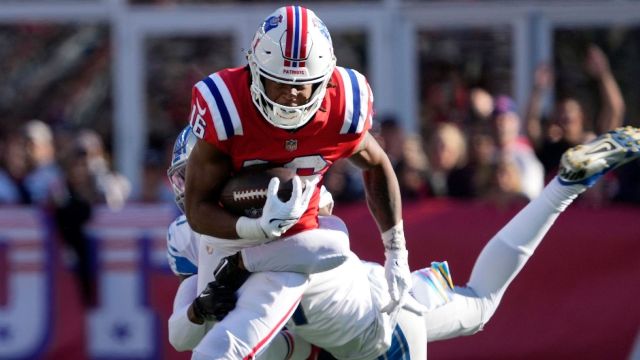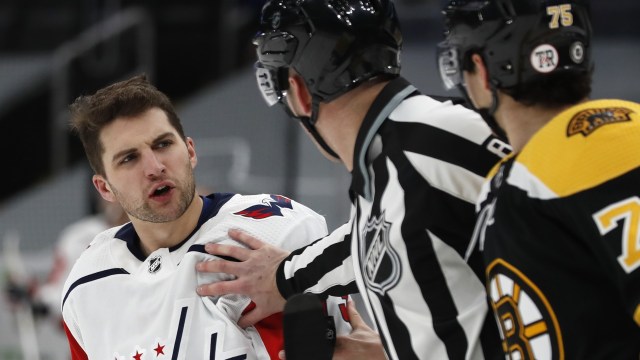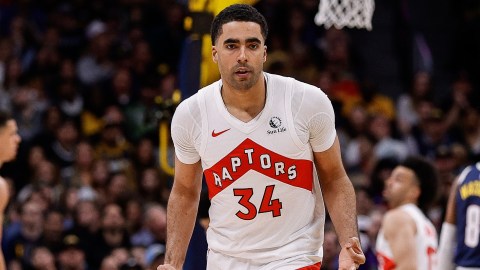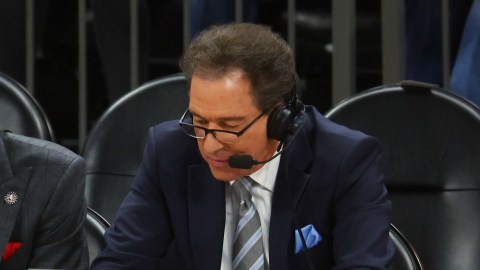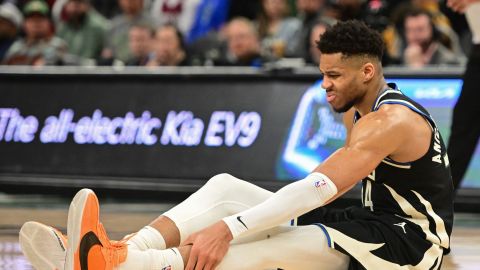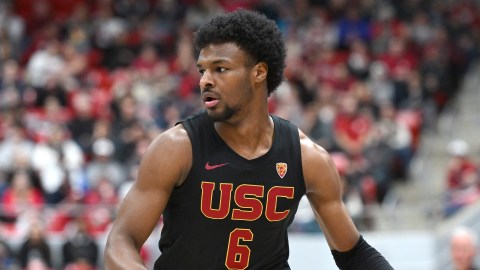It’s taken as gospel that modern NBA players are bigger, stronger, faster and more skilled than players of generations past. In general, they are.
But why?
Along the way to becoming a multibillion dollar behemoth, the NBA endured more than its share of adversity. Here are some realities of life in the NBA’s history that are taken for granted today.
Roster upheaval was the norm
If you’re from Boston, you likely consider LeBron James’ “The Decision” to be the start of the “Superteam Era.” If you don’t have green-colored glasses, you likely recognize the Celtics actually got things started when they brought in Kevin Garnett and Ray Allen to pair with Paul Pierce in 2007.
To be sure, star player movement has accelerated since then. But rosters weren’t nearly as static in the league’s formative years as many assume. Deep-pocketed franchises were able to hold onto their marquee players, but less liquid franchises were forced to sell off their best players to pay the bills.
The beneficiaries were teams like the Celtics, who landed stars such as Bob Cousy and Bill Russell on their draft days by taking advantage of the team now known as the Atlanta Hawks’ need to build its team around marketability more than talent. Mid-career moves to Boston by Hall of Famers such as Bob McAdoo, Nate Archibald and Bill Walton continued the trend.
Equipment was archaic
Try this: Scour your attic for the oldest basketball you can find. Dunk it in water, then leave it outside for a couple cold nights. Then stick it in the oven for an hour (with adult supervision) and inflate it only 75%. Now try to play with it.
Not great, is it?
When fans today mock the set shots and choppy dribbling from the 1950s and 1960s, they demonstrate ignorance of what the basketballs of the day were like. These weren’t computer-refined, textured, perfect spheres. They bounced unpredictably and the grip was inconsistent. Add in dead spots on hardwood floors that were placed over ice rinks and rodeo rings, and every dribble was hazardous.
Beyond the ball itself, the uniforms were made of cotton or wool, which sucked up sweat and became heavier as the game progressed. Shorts had belts. Warm-up clothing, which today exists mostly to entice fans to drop $150 on a windbreaker at the pro shop, was a must-have in the drafty fieldhouses and boxing halls where games often were played.
And don’t even get us started on footwear. Canvas high-tops with plain rubber soles were the norm for almost 50 years, before the introduction of real cushioned footbeds and constructed uppers to provide some semblance of foot and ankle support. Remember having to break in a pair of sneakers? Anyone younger than 35 probably doesn’t. Players now can throw on a brand-new pair of signature shoes, built with lightweight, space-aged materials, fresh out of the box, and play 48 minutes with hardly a blister.
Meanwhile, when Michael Jordan tried playing in a pair of original Nike Air Jordans late in his career, his feet literally bled.
Pay was nothing special
J.J. Redick was right, in a way: Early NBA players were plumbers and teachers. But what Redick and other hipsters ignore is that players had second jobs because they needed to. Most players were not highly paid relative to other upper-middle class professions until the 1980s when salaries exploded thanks to the league’s newfound popularity brought on by Magic Johnson, Larry Bird and Jordan.
Hall of Famers such as John Havlicek and Tom Heinsohn held summer jobs, and some even continued to work as real estate agents and insurance salesmen during the season. Criticizing players from past eras for holding jobs outside basketball is to reveal the privilege that today’s players enjoy by not needing to worry about making ends meet in the offseason.
Medical care was minimal
Speaking of privilege, today’s NBA arenas and practice facilities feature vast treatment rooms with multiple athletic training staff. As late as the early 1990s, many teams employed one trainer, who was responsible for taping ankles, treating sore joints, massaging sore muscles and more. And “load management” didn’t exist, either as a term or as a concept. Just take a look at how the list of players to play all 82 games each season dwindles, with a stark drop-off in the past 10 years.
Not only that, but much of what was then considered best practice in sports medicine, we now know to be flat-out wrong. Until the late 1970s, players would heat sore knees rather than ice them. Combine that with the fact an MCL or PCL injury was far more devastating to a player’s career, and it’s no wonder players weren’t able to produce at the same high level athletically, night after night, that they are today.
Sports science was barely acknowledged
Wilt Chamberlain was considered a bit of a kook for doing aerobics. Kareem Abdul-Jabbar did yoga, and people thought he’d gone off the deep end. Even weight training was controversial into the 1980s since some believed it was detrimental to agile athletes like basketball players.
Today, we know exercises that emphasize flexibility, heart rate and low impact — such as yoga — are highly beneficial for elite athletes. And try telling linebacker-in-shorts Karl Malone that lifting weights hampered his career. That’s just the physical side of things. All the current science behind sports psychology and mental health? There’s not even a comparison to be made to past eras when the belief was that thinking could only hurt the ballclub.
Promotional exposure was spotty
Joe Mazzulla would have loved to coach in the 1960s. Notoriously grumpy in his dealings with the media, Mazzulla would only have had to endure the occasional local newspaper or radio reporter asking if he “has the boys ready for the big upcoming contest against Buffalo.”
Game stories were rare because nobody cared who won or lost. The NBA was merely something to fill the arena between hockey games and boxing matches. Think of it as “Disney On Ice,” only they kept score. For Chamberlain’s 100-point game, possibly the single most famous game in NBA history, no video exists, no visiting beat reporters traveled for the game in Hershey, Pa., and only one hand-written scoresheet was kept. His feat wasn’t even front-page news in Philadelphia.
Into the ’80s, things weren’t much different. Most games weren’t televised, and many that were televised weren’t broadcast live. Until 1981, even NBA Finals games were shown on taped delay so as not to interfere with the local news.
Racism was very real
When it comes to a sport dragging its feet on racial equality, nothing challenges baseball, which took a half-century to remedy its crime of phasing out Black players in the late 1800s. Despite — or perhaps because of — it being a majority-Black league for many decades now, though, the NBA hasn’t been without its racial problems.
Chuck Cooper and Earl Lloyd broke the league’s color barrier in different ways, but even as Russell, Chamberlain and Oscar Robertson were legitimizing the league from a competitive standpoint, there were public relations reservations over selling the league to white audiences. The rival ABA shared those concerns, which is why it recruited white stars like Rick Barry to avoid the perception the new league was “too Black.”
When the NBA has faced problems, the specter of race often hovers above in ways it doesn’t in other sports. Conversations surrounding the league’s cocaine epidemic of the 1970s, the implementation of a dress code in the early 2000s and “The Malice at The Palace” dripped with racial overtones.
Style of play evolved — and will continue to evolve
We’d never seen a combination of size and skill like Chamberlain — until Shaquille O’Neal arrived. We’d never seen a diminutive scorer thrive like Archibald — until Allen Iverson arrived. We’d never seen anyone defy the laws of gravity like Julius Erving — until Vince Carter arrived.
The point is, the game has evolved — sometimes gradually, other times in leaps and bounds — and will keep evolving. Twenty years from now, when Redick will have long been mercifully off our screens, some other former player who spent his career on the margins of an NBA rotation will question whether Steph Curry was really a great 3-point shooter, or posit that Giannis Antetokounmpo was only good because he physically outmatched his competition.
Each generation builds upon what’s been built by previous generations. That’s true in all walks of life, not only basketball. Advances in technology and learning to become more efficient allow us to reach heights that were unthinkable in a little gym in Springfield, Mass. So players jump higher, teams score more and the game evolves.
Not better, not worse, just different.
